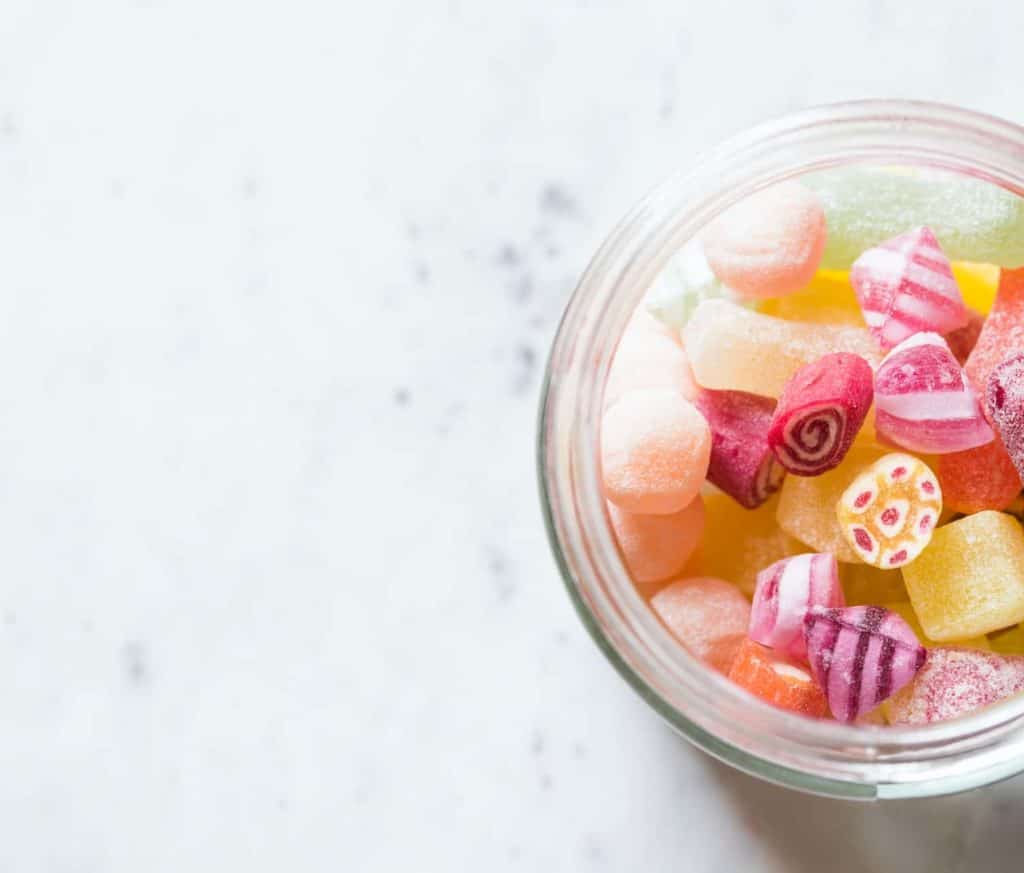
Joyce Leung
(Research Assistant, BFoodTech)
Note — The article was checked and updated September 2023.
Artificial sweeteners play a vital role in the food industry. They are low-calorie or calorie-free chemical substances used instead of sugar to sweeten foods and drinks.
Increasing consumption of artificial sweeteners is believed to counteract the effect of excessive consumption of sugary foods and beverages, which has been linked to many adverse health effects, including diabetes, depression, and heart disease.
For us to understand and know more about this topic, we will provide today a full overview of artificial sweeteners: what they are and how they are made, and provide a big picture about the pros and cons of using them and the daily limit dosage.
What exactly are artificial sweeteners
The primary use of artificial sweeteners is to replace the sweetness normally provided by sugars in food. Most artificial sweeteners are many times sweeter than natural sugars and have no energy content.
That being said, artificial sweeteners help alleviate the kind of concerns about the consumption of sugar because they are really not present at high levels, while carrying zero calorie contribution to our body as they are not being metabolized at all.
Such properties offer artificial sweeteners a unique selling point, and food manufacturers are willing to make health claims to promote their “sugar-free” product to appeal to health-conscious consumers.
The first ever artificial sweetener saccharin was discovered in 1879
Since then, artificial sweeteners have been used in many food products, especially in the confectionery market, a 200 percent increase in artificial sweeteners consumption for children and a 54 percent jump for adults between 1999 to 2012 was reported.[1,2]
Functional role of artificial sweeteners
Artificial sweeteners are specifically used as part of the sensory modification or improvement of the product.
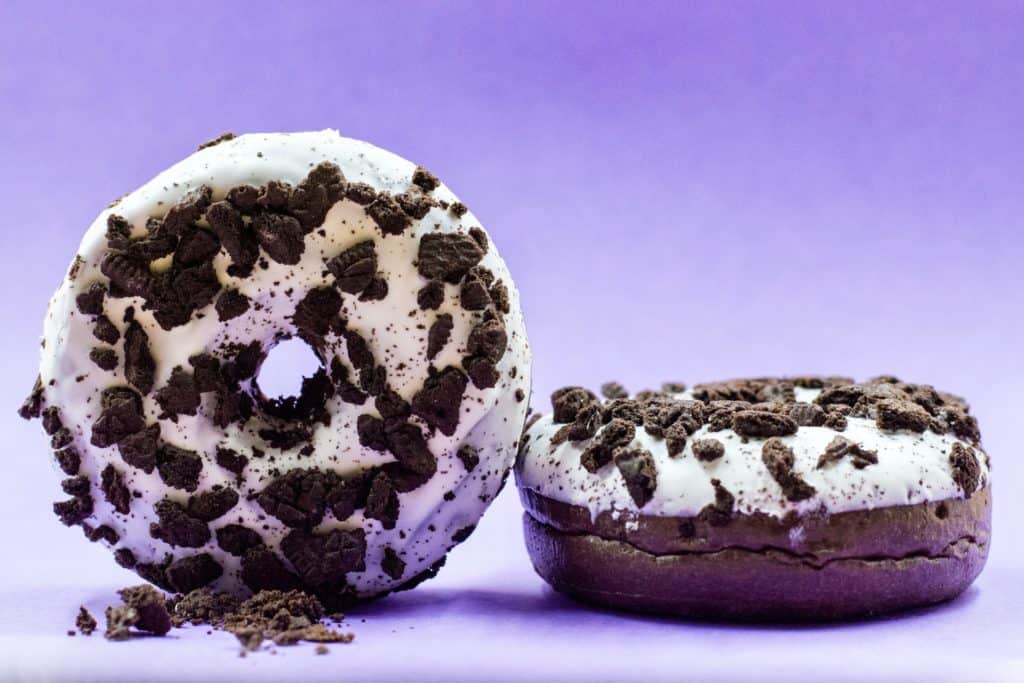
Being a flavor enhancer, artificial sweeteners are designed to:
- Intensify the perception and potency of traditional sweeteners such as sugar, fructose, and honey
- Smooth out sweetness profiles and complement characterizing flavor compounds (i.e. peppermint, ginger, cinnamon, and coffee)
- Increase flavor impact, minimize unwanted aftertastes (eg. fiery, peppery, or bitter elements associated with an alternative sweetener)
- Mask certain off-notes such as the unpleasant taste of metallic ions (i.e sodium, iron, and potassium).[3]
Artificial sweeteners are heavily used to improve taste and flavor which may allow less sugar to be used.
How artificial sweeteners are made
Artificial sweeteners may be derived through two mechanisms:
1) manufacturing of plant extracts
2) processed by chemical pathways.
Chemical pathway is more frequently used, as the yield rate from plant extracts are lower and more complicated. In addition, the artificial sweeteners manufactured from chemical pathway are normally sweeter than natural sugar.[4]
Plant extracts
Artificial sweeteners could be directly extracted through different plant species, either through the root, leaf, seed or fruit part. For instance, thaumatin is a sweet-tasting basic protein extracted from the fruits of a tropical plant, T. daniellii fruits.
Small fruit with pips are formed from inorescences. A jelly mass with an intensely sweet taste spreads around these kernel pips.[5]
1 kg of fruit can produce 3-6 g of pure protein of thaumatin
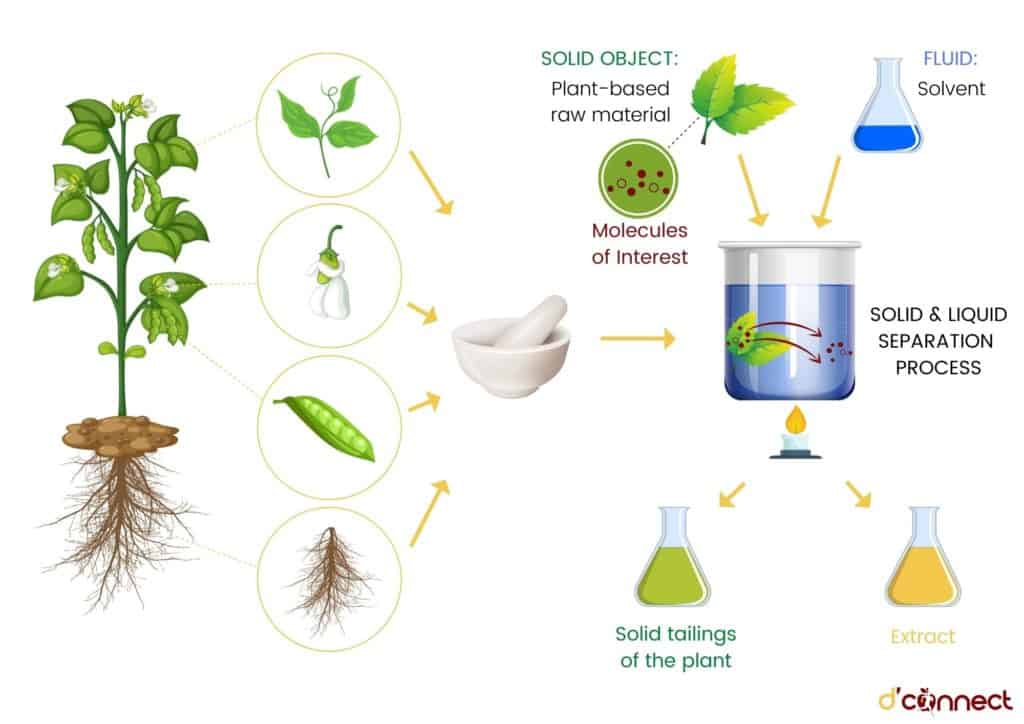
Chemical pathways
Chemical synthesis and direct fermentation are the main two chemical pathways followed in most artificial sweeteners production.[6]
Types of sweeteners
There is a general misconception that artificial sweeteners are the only available type of sweeteners in the market. In fact, they belong to a bigger category named “Intense Sweeteners”.
In New Zealand, there are currently 13 approved intense sweeteners for use according to FSANZ. Which could be further divided into four groups as shown below[7]:
Type 1) Artificial sweeteners (High-intensity sugar replacements)
Common characteristics among artificial sweeteners is that they provide a sweetness perception many times higher than that of white sugar. Examples of artificial sweeteners are aspartame, saccharin and sucralose.
Type 2) Sugar alcohols (Polyhydric alcohol texturizers)
During some of the manufacturing processes, sweeteners are added not just for sweetness but also to provide bulk or structuring effect in the food product.
Foods like confectionery will often be using sugar alcohols as a way of providing structures of the tablet in effect. Examples of sugar alcohols are mannitol, sorbitol, xylitol and lactitol.
Type 3) Novel Sweeteners
Novel sweeteners occur naturally in some plants and can be extracted to produce a highly concentrated extract.
Examples are steviol glycosides extracted from the South American plant Stevia rebaudiana Bertoni (stevia) and monk fruit extract (also called luo han guo extract) which is derived from the fruit of a perennial vine native to southern China.[8]
Examples of other novel sweeteners are trehalose and tagatose.

Type 4) Natural Sugar
There are several natural sugars.
- Sucrose – the common granulated sugar. It’s a combination of the two simpler sugars: glucose and fructose.
- Lactose – or milk sugar, consists of glucose and galactose
- Maltose – produced by the malting of barley, is a combination of two molecules of glucose.
Sugar has the dual attraction of providing quick energy and of being sweet. It is not surprising that sugar consumption has increased dramatically in all societies that have reached a certain stage of development.
RELATED — Sugar Addiction: Is Sugar “Cheap Cocaine”?
Sugars provide about 20% of the energy intake in the USA.[9] But there are problems with sugar: overconsumption is implicated in obesity and diabetes.
Characteristics of the commonly used artificial sweeteners
Physical State | Mouthfeel | Sweetness (Compared to sucrose) | Aftertaste | |
Acesulfame potassium | White crystalline solid | Thin | 200X | Slightly bitter/astringent |
Aspartame | White crystalline powder | Fair | 160-200X | Prolonged sweet aftertaste; not bitter or metallic |
Cyclamic acid, cyclamates | White crystalline powder | Good | 30-40X | Chemical sweetness with no aftertaste |
Saccharin | White monoclinic crystalline powder | Thin | 300X | Bitter, astringent, or metallic off-taste |
Sucralose | White crystalline powder | Doughy | 600X | Delayed onset of flavor, lingering sweet aftertaste |
Alitame | White crystalline powder | Sandy | 2000X | Intensely sweet aftertaste |
Thaumatin flavour enhancer | Cream-coloured powder | Fair | 750–1600X | Licorice aftertaste; strongly cationic |
Summary of approved and banned artificial sweeteners
Name | Permitted in NZ | Permitted in US | Permitted in EU |
Acesulfame potassium | ✔ | ✔ | ✔ |
Advantame | ✖ | ✖ | ✔ |
Alitame | ✔ | ✖ | ✖ |
Arabinose | ✖ | ✖ | ✖ |
Aspartame | ✔ | ✔ | ✔ |
Cyclamic acid, cyclamates | ✔ | ✖ | ✔ |
Glycine | ✖ | ✔ | ✔ |
Monellin | ✖ | ✖ | ✖ |
N-Acetylglucosamine | ✖ | ✔ | ✔ |
Neotame | ✖ | ✔ | ✔ |
Saccharin | ✔ | ✔ | ✔ |
Sucralose | ✔ | ✔ | ✔ |
Tagatose | ✖ | ✖ | ✖ |
Thaumatin flavour enhancer | ✔ | ✔ | ✔ |
Why are certain sweeteners banned?[10,11]
Advantame: In New Zealand it is banned due to potential to cause late-developing tumors.
Arabinose: Increases the risk of diabetes and cardiovascular diseases.
Aspartame: Banned in the European Union because it is a source of phenylalanine.
Glycine: Stimulates and inhibits cells in the brain and central nervous system.
Monellin: It easily denatures under high temperature conditions and loses its sweetness, thus cannot be proclaimed as “artificial sweetener”.
N-Acetylglucosamine: Increases the risk of glaucoma.
Neotame: Tumors, brain and liver damage, and even death, which happened in testing and experiments.
Tagatose: Unsuitable for people who are fructose intolerant.
Codes, numbers, and different names for artificial sweeteners
All additives currently in use, new ones and old ones alike, must be shown to be safe. In the EU, this is the responsibility of the European Food Safety Agency (EFSA), a body of people appointed for their independence and expertise.[12]
Each permitted additive has a unique E Number – the “E” simply means that the additive is approved for use across the EU.[3]
The numbering system in New Zealand conforms to the international numbering system. So any number that you see on the back of the packaging basically resembles the same code as the E Number, but invariably without sticking with the letter E in front of each of those additive numbers. Whereas in the US, they use a very different system which is a six-digit coding system.
The table below shows how the same sweetener could be interpreted differently in various countries.[7,10,11]
| US code | NZ code | EU code | |
| Aspartame | 325998 | 951 | E 951 |
There are various synonyms for the same artificial sweeteners that food manufacturers use during labeling.
This list will help you identify these artificial sweeteners.[13]
E-numbers | Types of Artificial sweeteners | Other Names |
E950 | Acesulfame potassium | Potassium acesulfame Acesulfame K Sunnette Acetosulfam HOE-095K ACK Ace K Equal Spoonful (also +aspartame) Sweet One Sunett |
E969 | Advantame | Advantame Acid |
E956 | Alitame | L-a-Aspartyl-N-(2,2,4,4-tetramethyl-3-thietanyl)-D-alaninamide, hydrated CAS 80863-62-3 (anhydrous) CAS99016-42-9 (hydrated) INS956 Aclame (Danisco) CP-54802 |
E414 | Arabinose | Ara Arabinopyranose Arabinopyranoside Arabinose L-Ara |
E951 | Aspartame | INS951 APM Aspartylphenylalanine methyl ester Equal (Nutrasweet Co.) Nutrasweet (Nutrasweet Co.) Sanecta (Holland Sweetener) AminoSweet Aspartyl-phenylalanine-1-methyl ester Canderel Equal Classic NatraTaste Blue |
E952 | Cyclamic acid, cyclamates | Cyclamate CAS100-88-9 Cyclohexanesulfamic acid Cyclohexylsulfamic acid N-cyclohexyl-sulphamic acid Hexamic acid |
E968 | Erythritol | Sugar Alcohol Zerose ZSweet |
Erythritol has 70% of the sweetness of sugar but only 5% of the calories
E422 | Glycerol | Glycerin, Glycerine |
E640 | Glycine | Aminoacetic acid Glycocoll Aciport Glicoamin L-Glycine Hampshire glycine Amitone Leimzucker Acetic acid |
E958 | Glycyrrhizin | Glycyrrhizic acid Glycyrrhetinic acid Glyzyrrhizin |
/ | N-Acetylglucosamine | D-GlcNAc N-Acetylchitosamine |
E961 | Neotame | N-[N-(3,3-DIMETHYLBUTYL)-L-alpha-ASPARTYL]-L-PHENYLALANINE 1-METHYL ESTER |
E954 | Saccharin | O-sulfobenzoic acid imide Benzoic sulfimide Sycal SDI Unisweet SAC Benzosulfimide Benzoic Sulfimide Gluside Glucid Garantose Saccharinol Saccharinose Saccharol Saxin Sykose Hermesetas OSulfobenzimide Saccharimide Saccharin acid form Saccharum |
E420 | Sorbitol | Sugar alcohol D-glucitol D-glucitol syrup |
Sorbitol is about 60 percent as sweet as sucrose with less calories
E955 | Sucralose | CAS 56038-13-2 INS955; E955 4,1 ,6 -Trichlorogalactosucrose 4,1 ,6 -Trichloro-4,1 ,6 -trideoxy-galacto-sucrose Trichlorogalactosucrose TGS |
E963 | Tagatose | Tag Tagatopyranoside Tagatopyranose Natrulose |
E957 | Thaumatin flavour Enhancer | Katemfe Talin |
E967 | Xylitol | Smart Sweet Xylipure Xylosweet |
Artificial sweeteners effects on our health (and side effects)
Based on the WHO criteria for the strength of evidence, the health effects of artificial sweeteners could be subdivided as:
- Convincing
- Probable
- Possible
- Insufficient
Only by achieving either convincing or probable levels would the health effects be regarded as having sufficient and sounding evidence.[14]
Gut health and microbiome
Recent concerns have been raised regarding the negative effects of the long-term use of artificial sweeteners on healthy gut bacteria, which are needed for optimal health.[15]
On one hand, several longitudinal studies suggest that increasing the dosage of aspartame on rats results in a significant reduction of most gut bacteria such as bifidobacteria, lactobacilli, Bacteroides and clostridia.[16]
Other studies show contradictory results on how the gut bacterial composition of total bacteria, such as Enterobacteriaceae and Clostridium leptum increases after using aspartame. Thus, the potential effects of artificial sweeteners on gut health are still insufficient, as most of the current research was conducted in rats, so human studies are needed before conclusions can be made.[17]
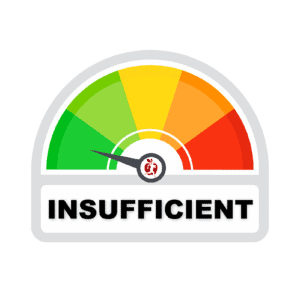
Cancer
Back in 2005, the European Ramazzini Foundation published a study suggesting aspartame could cause cancer in rats when consumed at levels close to the Acceptable Daily Intake (ADI) for humans.[18]
In 2013, EFSA completed a full risk assessment on aspartame and concluded it was safe to use at current levels of consumption. According to the Cancer Society, there’s no reliable evidence linking intense sweeteners, including aspartame, with any kind of cancer. However, results from epidemiological studies are inconsistent.[19,20]

Type II Diabetes
A few epidemiological studies show that the intake of sugar-sweetened beverages is associated with an increased risk for the development of type 2 diabetes in women.[21] The pathway is by raising blood glucose levels and thereby causing insulin resistance.
Yet, a meta-analysis that included twelve articles shows aspartame consumption was not associated with alterations in blood glucose, sucrose, and even insulin levels compared to control samples.
RELATED — Diabetes: Early Signs, Causes, Types and Treatment
In saying that, the bad fat cell, High-density lipoprotein (HDL) cholesterol serum levels were indeed higher on aspartame compared to control, which could probably pose harm to the development of diabetes.[22]

Osteoporosis
Osteoporosis is a health condition that weakens bones, making them fragile and more likely to break.
Several prospective studies have examined the association between soft drink consumption and impaired bone mineral content. However, the results are conflicting. The pathway is not exactly known.
It is hypothesized that artificial sweetener beverages may replace milk in diets, have low pH values, contain phosphoric acid and caffeine, but also that soft drink consumption reflects an unhealthy lifestyle.[23]

Depression
The role of aspartame in depression and mood has been studied with mixed results. In one study between two groups of participants with and without depression, aspartame has caused adverse reactions in the depressed participants.[24]
RELATED — Introduction to: Depression
Another study showed no difference in mood between those who drank aspartame-sweetened and sucrose-sweetened soft drinks observed between normal weight and overweight women.

Association between artificial sweeteners and seizures
Some classic signs and symptoms of a seizure include shaking or twitching, either of the entire body or parts of the body. Besides, sudden falling and losing control of motor functions or even rapid blinking or twitching in the face are reported symptoms of seizures.[25]
Aspartame has been linked to cognitive problems that could cause seizures
However, in several double-blind, placebo-controlled studies, results consistently suggest that aspartame, even in acute dosage of approximately 50 mg/kg, is no more likely than placebo to cause seizures in individuals who reported that their seizures were provoked by aspartame consumption.

Adverse effects on neurotransmitters (Aspartame)
Some people have a rare inherited disorder called phenylketonuria (PKU). People with PKU can’t break down the sweeteners aspartame and aspartame-acesulfame salt.
PKU affects the way the body processes a protein called phenylalanine.
If left untreated, since the amino acid phenylalanine serves as a neurotransmitter building block affecting the brain, and methanol is converted into toxic formaldehyde, aspartame will leave deleterious effects on the body and brain, where phenylalanine builds up in the bloodstream and causes brain damage.[26]

Allergy
In a cohort study with 60,466 women, it is found that artificially-sweetened beverages moderately increased the risk of asthma and allergic rhinitis both in early and later childhood.
These results appeared stronger for carbonated beverages.
We did not find similar results for sugar-sweetened beverages, suggesting that artificial sweeteners, rather than other additives and aromatic compounds in soft drinks, may play a role in the development of allergic diseases.[27,28]

Kidney Injury
Additionally, individuals with kidney issues should keep aspartame intake to a minimum, as several scientific researches for publications found adverse effects of aspartame on the kidney function.[29]
It showed that long-term consumption of aspartame led to a dose-dependent increased production of free radicals in renal tissues as well as kidney injury, based on several studies on animals.

Summary
According to the evidence-based assessment above, at this stage, the scientifically proven effects regarding artificial sweeteners are:
1. They may lead to Type II diabetes.
2. They do not lead to seizures.
3. They cause brain damage to PKU patients while consuming aspartame.
4. They increase the risk of allergic rhinitis.
5. They may cause kidney damage.
Are there healthy benefits to using artificial sweeteners?
While some of the researchers have demonized the effect of artificial sweeteners, making the public perception towards artificial sweeteners to be pessimistic, some of the most commonly used sweeteners’ profile is highly acceptable.
In the pancreas, aspartame does not stimulate an insulin response as sugar does.
Dental health
The bacteria in our mouth breaks sugar down into acids. Those acids combine with bacteria, saliva, and food to create plaque, a substance that sticks to our teeth and wears away at our tooth enamel, eventually creating cavities.
Unlike regular sugar, artificial sweeteners are considered non-cariogenic, meaning that they don’t contribute to tooth decay.
When we eat or drink something with sugar, the pH in our mouth drops due to an increase in acidity.[30] Artificial sweeteners seem to have the opposite effect, which may help to balance our salivary pH and decrease the amount of decay-causing bacteria in the mouth.

Weight loss
Some intervention studies show that consumption of artificially sweetened beverages resulted in lower energy intakes compared to sugar-sweetened beverages.
A meta-analysis of the 9 studies with weight loss as an outcome measure also gave the appearance of an increased weight loss with aspartame, where both energy intake and weight loss produced an estimated rate of weight loss of about 0.2 kg/week.
Nevertheless, these compensation values are derived from short-term studies. More data are needed over the long term to determine whether tolerance to the effects is acquired.[31]

Less calorie absorption
Artificial sweeteners will break down in the mouth in a similar way to that of sugar but the other advantage is that they don’t provide the same calorie contribution that sugar does.
To say that they are not digestible is not entirely true. However, they don’t undergo the same digestive pathway that sugar and glucose do, so they won’t be taken up directly in the stomach and small intestine. They will actually get fermented in the gut which means that we only get a partial uptake of the caloric load.

However, they can cause some side effects because of where they are actually broken down. This is why we quite often see health warnings on products that indicate the possibility of a laxative effect if consumed in excess.[32]
How much can you have daily
When deciding whether to include any food additives into our diet, it is of utmost importance that such additives are necessary as well as safe, and a list of permitted additives, together with the foods in which they are allowed and their levels of use, is laid down in the Food Standard Code.[33]
Intense sweeteners | Code number | ADI (mg) | Sweetness (x compared to sucrose) | Commonly found in |
Acesulphame-potassium (Acesulphame-K) | 950 | 0-15 | 200 | Tabletop sweeteners (eg, Equal), confectionery, canned food, oral hygiene products, pharmaceuticals |
Advantame | 969 | 0-5 | 20,000 | Permitted in a range of foods |
Alitame | 956 | 0-1 | 2,000 | Toiletries, pharmaceuticals, rarely used in food products |
Aspartame | 951 | 0-40 | 200 | Tabletop sweeteners (eg, Equal), soft drinks, yoghurt, confectionery, chewing gum |
Aspartame-acesulphame salt | 962 | 0-40 | 350 | Drinks, confectionery, chewing gum |
Cyclamate | 952 | 0-11 | 30-50 | Tabletop sweeteners (eg, Sugromax Liquid), confectionery, drinks |
Neotame | 961 | 0-2 | 7,000-13,000 | Canned fruit, drinks, confectionery |
Saccharin | 954 | 0-5 | 300 | Tabletop sweeteners (eg, Sugromax, Sucaryl), drinks, confectionery, medicines, toothpaste |
Sucralose | 955 | 0-15 | 600 | Tabletop sweeteners (eg, Splenda), drinks, confectionery, range of foods |
The safe levels of food additives like sweeteners are calculated using a measure called the “acceptable daily intake” or ADI. ADIs tell us how much of a specific food additive we can safely eat each day, over the course of our life.
The ADI for the general artificial sweeteners ranges between 0-10mg
While aspartame has the highest acceptable range of 40 milligrams for each kilogram of body weight. To exceed this, a 70 kg adult would have to drink at least 15 to 20 cans of diet soft drink a day – every day of their life.
The general rule of thumb is that artificial sweeteners which get higher sweetness intensity should be taken less. That is why alitame or neotame, which have a sweetness potency 1000 times greater than that of sucrose, must be consumed less than 2 milligrams per day.[34]
The World Health Organization (WHO) recommends free or added sugars should make up less than 10 percent of our daily energy intake. Its guidelines apply to all sugars added to food and the sugars present in honey, syrups and fruit juices.
For an adult, five percent is about 25g or six teaspoons.
RELATED — Diet and the Brain: Our brain on sugar
A survey commissioned by New Zealand Food Safety and FSANZ suggested average people consume much more than 25g of sugar; while another study published in Nutrients estimated half of Kiwi adults eat about 57g (14 teaspoons) each day.
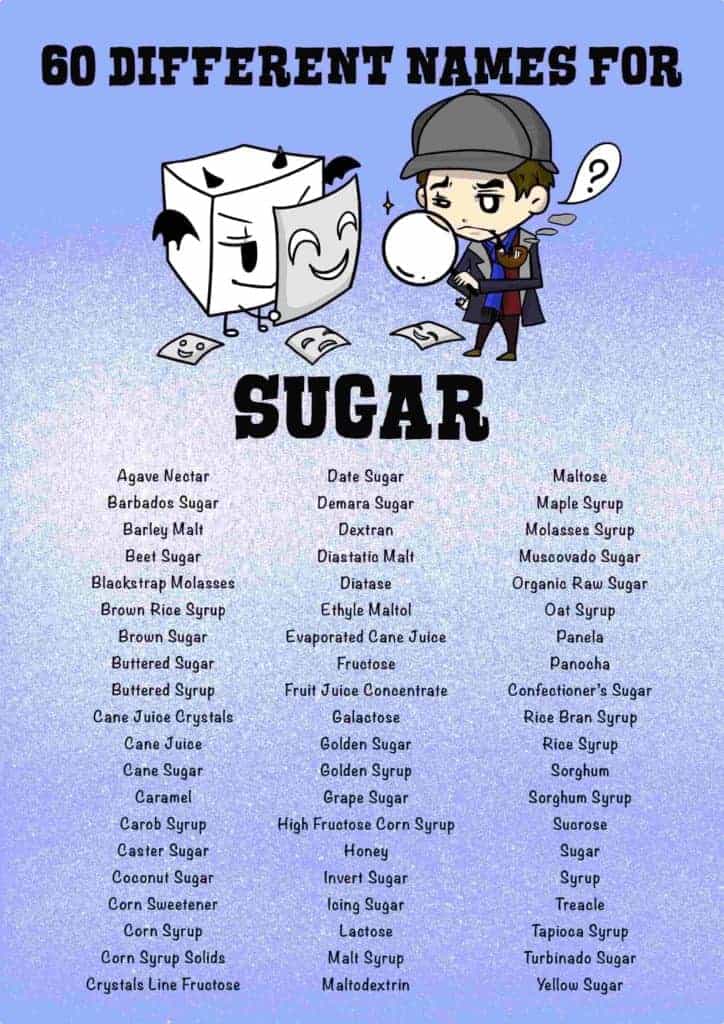
The result urges the need for the public to switch from using normal sugar to artificial sugar for the sake of less energy content per weight.[35]
Related Questions
1. What sweeteners are artificial?
Below is the summary list of common artificial sweeteners:
- Acesulfame potassium
- Aspartame
- Cyclamic acid
- Saccharin
- Sucralose
- Alitame
- Thaumatin flavor Enhancer
- Advantame
- Aspartame-acesulfame salt
- Cyclamate
- Neotame
2. Are all food manufacturers required to label any use of artificial sweeteners?
Most food additives must be listed by their class name followed by the name of the food additive or the food additive number. The class name indicates what the food additive does (i.e. its purpose).
Exemptions
Some foods are not required to be labeled with a statement of ingredients, for example, unpackaged food, food contained in a small package (such as a package with a surface area of fewer than 100 cm2). Food additives in these foods are therefore also not required to be labeled.
Sometimes compound ingredients are used in food. A compound ingredient is an ingredient made up of two or more ingredients, for example, tomato paste containing tomato, olive oil, dried herbs, sugar, salt, and a preservative that is incorporated into a meat casserole.
The ingredients (including food additives) of a compound ingredient don’t have to be listed if the compound ingredient makes up less than 5% of the final food. However, if additives in the compound ingredient perform a purpose in the final food, they have to be declared in the statement of ingredients.[36]
3. What is the healthiest / best option for artificial sweetener?
Food manufacturers mainly go with sucralose (Splenda) and aspartame K (Equal), the two well-studied artificial sweeteners with the least dispute.
In saying that, we would suggest minimising your intake of any processed foods.
4. Can artificial sweeteners be used as an ant poison?
This particular urban legend started with a satirical article published on a website called The Spoof! which was titled, “FDA Certifies Aspartame as Ant Poison.”[37]
In the article, the chief of the Food and Drug Administration reveals that aspartame (Nutrasweet) was originally developed as an ant poison but was changed to nonpoisonous status after it was realized that a lot more money could be made on it as a sweetener rather than an insecticide.
The article contained a disclaimer revealing that the story was fictitious. Apparently, not everyone read the disclaimer.[38]
Joyce is a dedicated and passionate undergraduate with a keen interest in research and development of novel foods. She is currently completing her studies with a focus on becoming a Bachelor of Food Technology with Honors major in Food Product Technology.
Her personal passion is in finding new technologies and processing methodologies that can improve the existing products in the food market.
References
(1) Dayton, P. K. (2020). FOOD SWEETENER MARKET – GROWTH, TRENDS, COVID-19 IMPACT, AND FORECASTS (2021 – 2026). Retrived from https://www.annualreviews.org/doi/abs/10.1146/annurev.es.16.110185.001243?casa_token=9hC59YwZmscAAAAA%3AYk7wzgvPfnN3WziON-jGIAcoO8ThAt5SBN9s8BA9VKF9bFLh_WHk98i45x8iMUMig5-qjK0vRQH-6w&journalCode=ecolsys.1
(2) Gardner, C., Wylie-Rosett, J., Gidding, S. S., Steffen, L. M., Johnson, R. K., Reader, D., & Lichtenstein, A. H. (2012). Nonnutritive sweeteners: current use and health perspectives: a scientific statement from the American Heart Association and the American Diabetes Association. Circulation, 126(4), 509-519. Retrived from https://www.sciencedaily.com/releases/2017/01/170110101625.htm
(3) Baziwane, D., & He, Q. (2003). Gelatin: the paramount food additive. Food Reviews International, 19(4), 423-435. Retrived from https://www.tandfonline.com/doi/full/10.1081/FRI-120025483?casa_token=KrCYol-fqioAAAAA%3AnpGvJy53pkHKnM4pYHD7Pij0b84C56T4_XUwtDNLG9CaOh7IKaxk-gCXSi2HpWUVur0vr0eUI40zMQ
(4) Chattopadhyay, S., Raychaudhuri, U., & Chakraborty, R. (2014). Artificial sweeteners–a review. Journal of food science and technology, 51(4), 611-621. Retrived from https://www.sciencedirect.com/topics/agricultural-and-biological-sciences/artificial-sweeteners
(5) Ahmad, S. Y., Friel, J., & Mackay, D. (2020). The effects of non-nutritive artificial sweeteners, aspartame and sucralose, on the gut microbiome in healthy adults: secondary outcomes of a randomized double-blinded crossover clinical trial. Nutrients, 12(11), 3408. Retrived from https://www.researchgate.net/publication/336073869_Plants_as_a_source_of_natural_high-intensity_sweeteners_a_review
(6) CLONINGER, M. R., & BALDWIN, R. E. (1974). L‐Aspartyl‐L‐phenylalanine methyl ester (Aspartame) as a sweetener. Journal of Food Science, 39(2), 347-349. Retrieved from https://ift.onlinelibrary.wiley.com/doi/abs/10.1111/j.1365-2621.1974.tb02891.x?casa_token=QlhW_xBeRtMAAAAA%3AgfpPhSz3im5ii9d0yZPHUfH4jwzMzs2xfy0–Koc3yN2rzOYT-SclcRFc-O9LqMoC-UMJAD1wX7TtxQ
(7) Food Standards Australia and New Zealand (2021). Intense Sweeteners.
(8) Gardner, C., Wylie-Rosett, J., Gidding, S. S., Steffen, L. M., Johnson, R. K., Reader, D., & Lichtenstein, A. H. (2012). Nonnutritive sweeteners: current use and health perspectives: a scientific statement from the American Heart Association and the American Diabetes Association. Circulation, 126(4), 509-519.
(9) Steele, E. M., Baraldi, L. G., da Costa Louzada, M. L., Moubarac, J. C., Mozaffarian, D., & Monteiro, C. A. (2016). Ultra-processed foods and added sugars in the US diet: evidence from a nationally representative cross-sectional study. BMJ open, 6(3), e009892. Retrieved from https://bmjopen.bmj.com/content/6/3/e009892.short
(10) Rangan, C., & Barceloux, D. G. (2009). Food additives and sensitivities. Disease-a-month, 55(5), 292-311. Retrieved from https://tahomaclinic.com/Private/Articles1/Sulfites/Rangan%202009%20-%20Food%20Additives%20and%20Sensitivities.pdf
(11) Kallscheuer, N. (2018). Engineered microorganisms for the production of food additives approved by the European Union—a systematic analysis. Frontiers in microbiology, 9, 1746. Retrieved from https://www.frontiersin.org/articles/10.3389/fmicb.2018.01746/full
(12) Brown, R. J., De Banate, M. A., & Rother, K. I. (2010). Artificial sweeteners: a systematic review of metabolic effects in youth. International Journal of Pediatric Obesity, 5(4), 305-312. Retrieved from https://www.tandfonline.com/doi/abs/10.3109/17477160903497027
(13) Mehmet. O. (2021). Lists of Names of Artificial Sweeteners. Retrieved from https://www.drozshow.com/list-names-artificial-sweeteners
(14) World Health Organization. (2003). Diet, nutrition, and the prevention of chronic diseases: report of a joint WHO/FAO expert consultation (Vol. 916). World Health Organization. Retrieved from https://books.google.co.nz/books?hl=zh-TW&lr=&id=S6YsDwAAQBAJ&oi=fnd&pg=PA4&dq=World+Health+Organization.+(2003).+Diet,+nutrition,+and+the+prevention+of+chronic+diseases:+report+of+a+joint+WHO/FAO+expert+consultation+(Vol.+916).+World+Health+Organization.&ots=t9XLhkQNDd&sig=7k5-l_gy_Jchqn3z6QZnIK75Nsk&redir_esc=y#v=onepage&q&f=false
(15) Abou-Donia, M. B., El-Masry, E. M., Abdel-Rahman, A. A., McLendon, R. E., & Schiffman, S. S. (2008). Splenda alters gut microflora and increases intestinal p-glycoprotein and cytochrome p-450 in male rats. Journal of Toxicology and Environmental Health, Part A, 71(21), 1415-1429. Retrieved from https://pubmed.ncbi.nlm.nih.gov/18800291/
(16) Palmnäs, M. S., Cowan, T. E., Bomhof, M. R., Su, J., Reimer, R. A., Vogel, H. J., … & Shearer, J. (2014). Low-dose aspartame consumption differentially affects gut microbiota-host metabolic interactions in the diet-induced obese rat. PloS one, 9(10), e109841. Retrieved from https://pubmed.ncbi.nlm.nih.gov/25313461/
(17) Suez, J., Korem, T., Zeevi, D., Zilberman-Schapira, G., Thaiss, C. A., Maza, O., … & Elinav, E. (2014). Artificial sweeteners induce glucose intolerance by altering the gut microbiota. Nature, 514(7521), 181-186. Retrieved from https://pubmed.ncbi.nlm.nih.gov/25231862/
(18) Lohner, S., Toews, I., & Meerpohl, J. J. (2017). Health outcomes of non-nutritive sweeteners: analysis of the research landscape. Nutrition journal, 16(1), 1-21. Retrieved from https://pubmed.ncbi.nlm.nih.gov/28886707/
(19) Berry, C., Brusick, D., Cohen, S. M., Hardisty, J. F., Grotz, V. L., & Williams, G. M. (2016). Sucralose non-carcinogenicity: a review of the scientific and regulatory rationale. Nutrition and cancer. Retrieved from https://pubmed.ncbi.nlm.nih.gov/27652616/
(20) Mishra, A., Ahmed, K., Froghi, S., & Dasgupta, P. (2015). Systematic review of the relationship between artificial sweetener consumption and cancer in humans: analysis of 599,741 participants. International journal of clinical practice, 69(12), 1418-1426. Retrieved from https://doi.org/10.1111/ijcp.12703
(21) Santos, N. C., de Araujo, L. M., De Luca Canto, G., Guerra, E. N. S., Coelho, M. S., & Borin, M. D. F. (2018). Metabolic effects of aspartame in adulthood: a systematic review and meta-analysis of randomized clinical trials. Critical reviews in food science and nutrition, 58(12), 2068-2081. Retrieved from https://pubmed.ncbi.nlm.nih.gov/28394643/
(22) Rowan, A. J., Shaywitz, B. A., Tuchman, L., French, J. A., Luciano, D., & Sullivan, C. M. (1995). Aspartame and seizure susceptibility: Results of a clinical study in reportedly sensitive individuals. Epilepsia, 36(3), 270-275. Retrieved from https://doi.org/10.1111/j.1528-1157.1995.tb00995.x
(23) Libuda, L., Alexy, U., Remer, T., Stehle, P., Schoenau, E., & Kersting, M. (2008). Association between long-term consumption of soft drinks and variables of bone modeling and remodeling in a sample of healthy German children and adolescents. The American journal of clinical nutrition, 88(6), 1670-1677. Retrieved from https://pubmed.ncbi.nlm.nih.gov/19064530/
(24) Lindseth, G. N., Coolahan, S. E., Petros, T. V., & Lindseth, P. D. (2014). Neurobehavioral effects of aspartame consumption. Research in nursing & health, 37(3), 185-193. Retrieved from https://doi.org/10.1002/nur.21595
(25) Rowan, A. J., Shaywitz, B. A., Tuchman, L., French, J. A., Luciano, D., & Sullivan, C. M. (1995). Aspartame and seizure susceptibility: Results of a clinical study in reportedly sensitive individuals. Epilepsia, 36(3), 270-275. Retrieved from https://pubmed.ncbi.nlm.nih.gov/7614911/
(26) Çadirci, K., Tozlu, Ö. Ö., Türkez, H., & Mardinoğlu, A. (2020). The in vitro cytotoxic, genotoxic, and oxidative damage potentials of the oral artificial sweetener aspartame on cultured human blood cells. Turkish Journal of medical sciences, 50(2), 448-454.
(27) Tarlo SM, Sussman GL. Asthma and anaphylactoid reactions to food additives. Can Fam Physician. 1993;39:1119-1123. Retrieved from https://www.ncbi.nlm.nih.gov/pmc/articles/PMC2379654/
(28) Stohs SJ, Miller MJ. A case study involving allergic reactions to sulfur-containing compounds including, sulfite, taurine, acesulfame potassium, and sulfonamides. Food Chem Toxicol. 2014;63:240-243. Retrieved from https://www.sciencedirect.com/science/article/pii/S0278691513007539
(29) Choudhary, A. K., & Pretorius, E. (2017). Revisiting the safety of aspartame. Nutrition reviews, 75(9), 718-730. Retrieved from https://doi.org/10.1093/nutrit/nux035
(30) Who, J., & Consultation, F. E. (2003). Diet, nutrition and the prevention of chronic diseases. World Health Organ Tech Rep Ser, 916(i-viii), 1-149. Retrieved from https://www.fao.org/3/ac911e/ac911e00.htm
(31) de la Hunty A, Gibson S, Ashwell M (2006) A review of the effectiveness of aspartame in helping with weight control. Nutr Bull 31:115–128. Retrieved from https://doi.org/10.1111/j.1467-3010.2006.00564.x
(32) Magnuson, B. A., Carakostas, M. C., Moore, N. H., Poulos, S. P., & Renwick, A. G. (2016). Biological fate of low-calorie sweeteners. Nutrition Reviews, 74(11), 670-689. Retrieved from https://doi.org/10.1093/nutrit/nuw032
(33) Belinda, C. (2021). Are artificial sweeteners better than sugar? Retrieved from https://www.consumer.org.nz/articles/artificial-sweeteners
(34) Mortensen, A. (2006). Sweeteners permitted in the European Union: safety aspects. Scandinavian Journal of Food and Nutrition, 50(3), 104-116. Retrieved from https://www.tandfonline.com/doi/full/10.1080/17482970600982719
(35) WHO, W. (2012). Guideline: Sugar Recommendation.
(36) Ghosh, D. (2014). Food safety regulations in Australia and New Zealand food standards. Journal of the Science of Food and Agriculture, 94(10), 1970-1973.
(37) Sorvari, J., & Haatanen, M. K. (2014). Aspartame-based sweetener as a strong ant poison: Falsifying an urban legend?. Sociobiology, 59(2), 343-350. Retrieved from https://core.ac.uk/download/pdf/230136369.pdf
(38) Klotz, J. H., Vail, K. M., & Willams, D. F. (1997). Toxicity of a boric acid-sucrose water bait to Solenopsis invicta (Hymenoptera: Formicidae). Journal of economic entomology, 90(2), 488-491. Retrieved from https://doi.org/10.1093/jee/90.2.488

